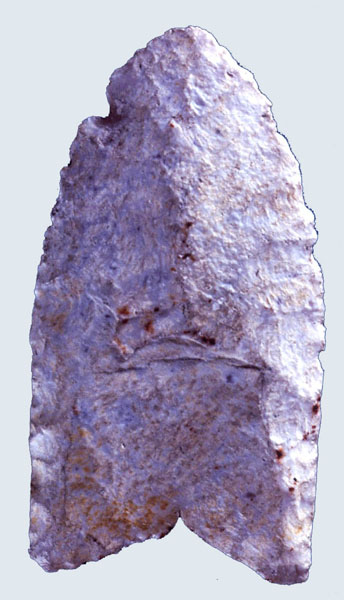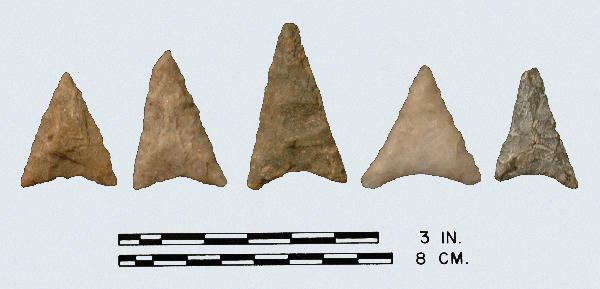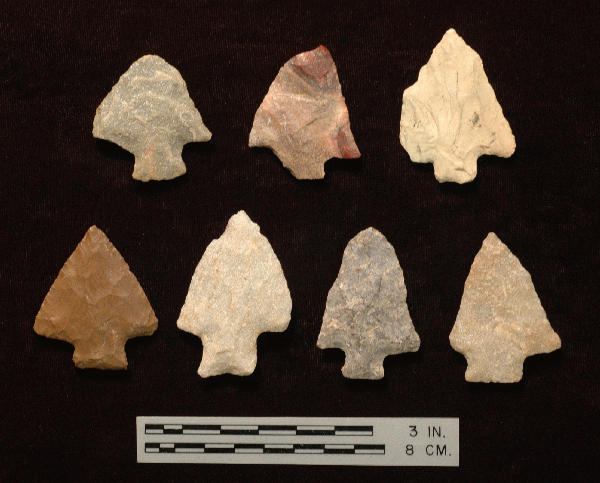
Perkiomen: Top Row: quartzite, chert, tuff; Bottom Row: jasper, quartzite, rhyolite, quartzite.
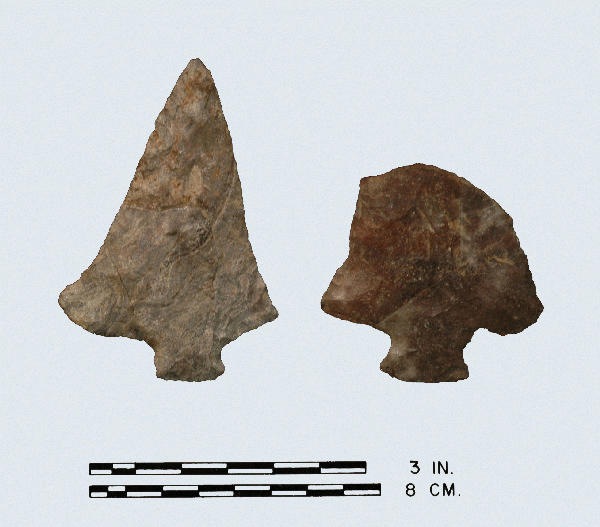
Perkiomen: 44CK0004, all rhyolite.
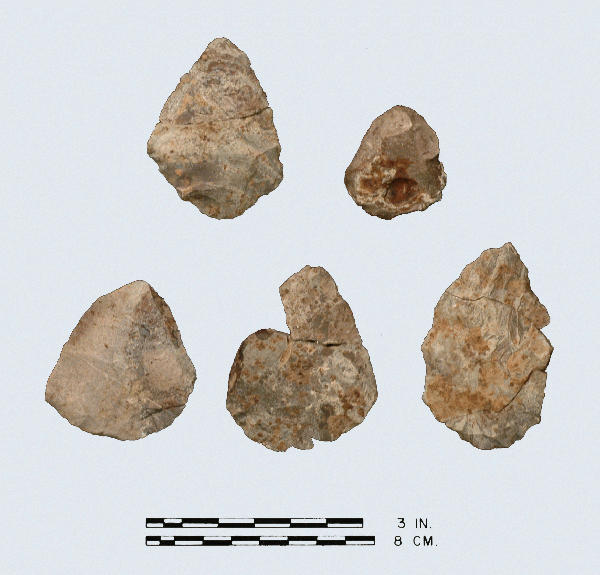
Perkiomen: 44CK0004, rhyolite performs.
Type Corner Notched Late-Archaic
Defining Attributes
The Perkiomen is a broad, boldly flaked spear-point of semi-lozenge shape. The stem is small with a usually convex (although sometimes straight) base. Generally, Perkiomen points are generally half as broad as long, rarely narrow, and often very asymmetrical. They are extremely thin for their width.
Chronology
The Perkiomen point dates to the Late Archaic period, 1500 to 1200 BCE. Witthoft (1953) describes the Perkiomen as similar to the Susquehanna Broad point.
Description
- Blade: The blade is thin and approximately an equilateral triangle shape, with rarely any medial ridge. The blade is often somewhat out of center in relation to the stem. Blade edges are frequently asymmetrical and convex near the tip.
- Base: The base is usually convex, sometimes straight, and almost never concave. The stem is unusually small compared to the blade, and frequently is tiny compared to the rest of the spear. The stem corners are rounded and never suggest barbs. The edges of the stem and basal corners are ground smooth.
- Size: Length ranges from 25 to 75 mm. Width ranges from 25 to 60 mm. Width ranges from 3 to 7 mm.
- Technique of manufacture: The point is often shaped from a large oval or pentagonal preform. The flaking is wide and shallow soft percussion with some pressure flaking around the base. The flaking produces essentially a flat cross section.
Discussion
Perkiomen points are often found in association with soapstone vessels. They are found in small numbers across all of Virginia. They tend to be made from exotic material. Most of the points made from chert or jasper were flaked from thermally altered flakes or preforms (McAvoy & McAvoy 1997).
Defined in Literature
This type was originally defined by Witthoft in 1953 in Pennsylvania Archaeologist, based on points recovered from eastern Pennsylvania (originally called the Perkiomen Broad Spear point).
References

